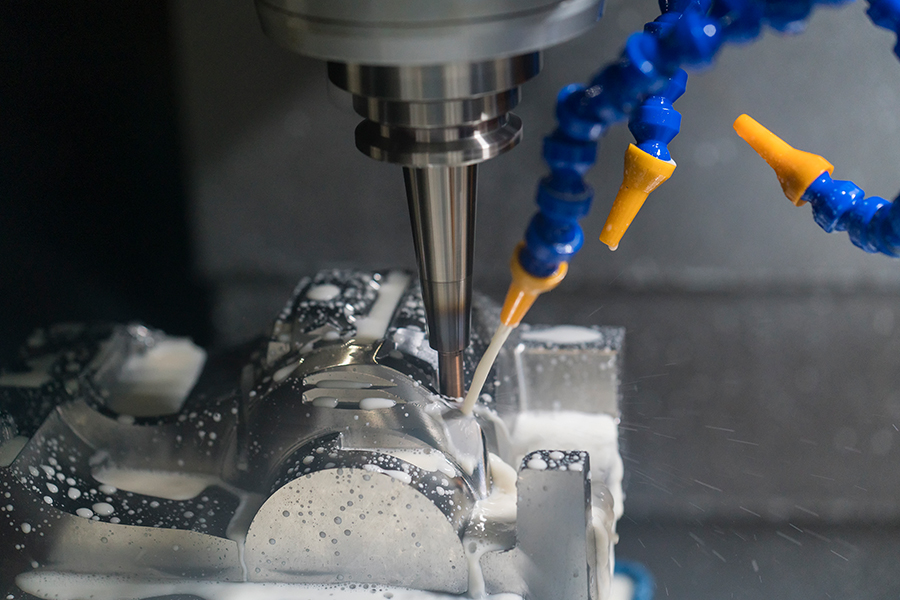The machining process of CNC lathes is similar to that of ordinary lathes, but since CNC Machining is a mold clamping process, all turning processes are completed automatically and continuously, so be sure to pay attention to the following points:
- Reasonable selection of cutting parameters
The three main factors for efficient metal cutting are the material being machined, the cutting tool and the cutting conditions. They determine machining time, tool life and machining quality. A cost-effective machining method must be a reasonable choice of cutting conditions.
The three components of cutting conditions, cutting speed, feed and depth of cut, directly lead to tool damage. As the cutting speed increases, the temperature of the tool tip increases, resulting in mechanical, chemical and thermal wear. Tool life is halved as cutting speed increases.
The relationship between feed conditions and tool backside wear occurs within a very narrow range. However, the feed rate is large, the cutting temperature is high, and the back wear is large. The effect on the tool is less than the cutting speed. Although the effect of depth of cut on the tool is less than cutting speed and feed rate, the hardened layer of the cutting material can also affect tool life when cutting at shallow depths of cut.
The user should select the cutting speed according to the material, hardness, cutting conditions, material type, feed rate, cutting depth, etc.
Appropriate processing conditions are selected based on these factors. Regular and constant wear and a long service life are ideal conditions.
In practice, however, the choice of tool life is related to tool wear, workpiece dimensional variation, surface quality, cutting noise and process heat. When determining the processing conditions, research should be carried out according to the actual situation. Harder inserts and coolants are available for difficult-to-machine materials such as stainless steel and heat-resistant alloys.
- Reasonable selection of tools
(1) When roughing, choose a tool with high strength and durability to meet the requirements of large back and large feed during roughing.
(2) When turning, please choose high-precision and durable tools to ensure the required machining accuracy.
(3) Use the machine tool and the machine tool to clamp the blade as much as possible to reduce the tool change time and facilitate tool setting.
- Reasonable selection of fixtures
(1) Try to use ordinary fixtures to clamp the workpiece and avoid using special fixtures.
(2) The positioning datum of the parts is matched to reduce the positioning error.
- Determine the processing route
The machining route refers to the movement path and direction of the tool relative to the part being machined on the CNC machine tool.
(1) It must be able to ensure the machining accuracy and surface roughness requirements.
(2) Make the processing route as short as possible to reduce the idling time of the tool.
- The relationship between processing route and processing capacity
At present, when CNC lathes have not yet reached general use, the excess allowance of blanks, especially those containing forged and cast hard cortex, must be placed and processed on ordinary lathes. If you need to use a CNC lathe for processing, you should pay attention to the flexible arrangement of the program.
- Fixture Mounting Points
At present, the connection between the hydraulic chuck and the hydraulic clamping cylinder is done through a tie rod. The clamping points of the hydraulic chuck are as follows: first remove the nut and pull tube of the hydraulic cylinder by hand, then pull it out from the rear end of the main shaft, and then remove the clamp fixing screw by hand. , and then remove the chuck.
Tool wipers are short blades parallel to the tool tip, ground behind the tool blade in the direction of a small deflection angle. Mainly used for primary and secondary cuts after cutting, like removing burrs and other scars during finishing. The purpose is to improve the surface roughness of the workpiece, mainly used for finishing tools.
cnc machining parts brass
cnc machining plastic parts
cnc machining prototype
cnc copper parts machining
wood cnc service machining
cnc machining parts turning
precis cnc machining part
cnc lathe machining precision
cnc machining centre master
cnc lathe machining center

